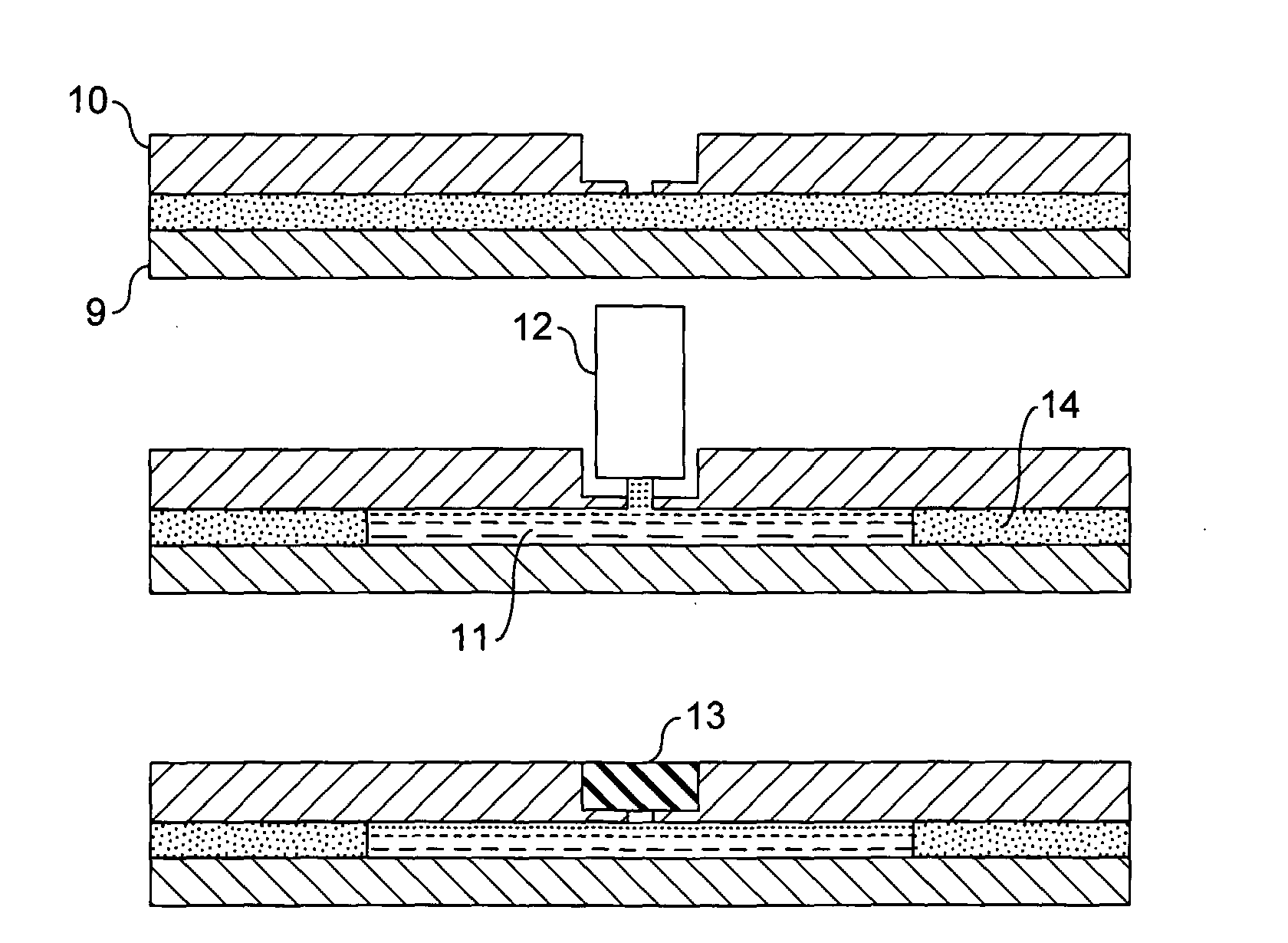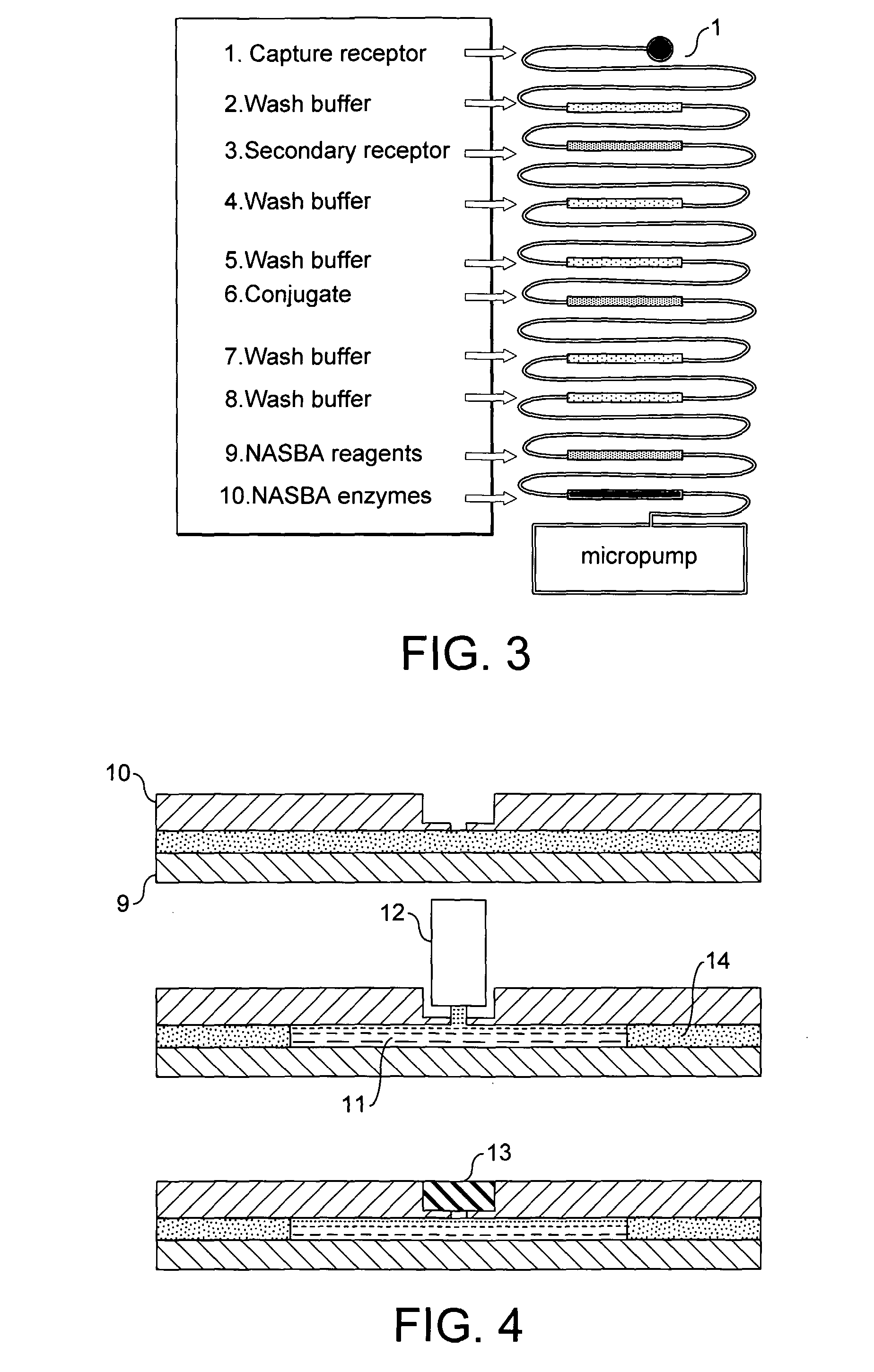Device For Carrying Out A Biological Assay
a technology for biological assays and devices, applied in laboratory glassware, instruments, paper/cardboard containers, etc., to achieve the effects of reducing the cost of mass production, great flexibility of design freedom, and improving the chemical resistance against acids and bases
- Summary
- Abstract
- Description
- Claims
- Application Information
AI Technical Summary
Benefits of technology
Problems solved by technology
Method used
Image
Examples
Embodiment Construction
[0071]Referring to the drawings, FIG. 1 shows a device according to the invention comprising several reaction sites 1 each in fluid communication with a separate reagent reservoir system 2. The sample to be tested is applied at the inlet hole 3 and is communicated to each of the reaction sites via a supply channel 4. In this embodiment the reagent reservoir systems are formed of sinuate channels. The supply channel is in fluid communication with a waste chamber 5.
[0072]FIG. 2 shows an alternative device according to the invention. This embodiment is substantially similar to the device illustrated in FIG. 1 but further includes valves 6 located between each of the reaction sites and the reagent reservoir in fluid communication therewith. The valves will be opened for air when the sample is loaded. The sample will then fill the reaction sites until it reaches the valve. The valves are then closed. The rest of the sample will be drained into the waste unit or chamber 5. If required, su...
PUM
| Property | Measurement | Unit |
|---|---|---|
| thickness | aaaaa | aaaaa |
| thickness | aaaaa | aaaaa |
| volume | aaaaa | aaaaa |
Abstract
Description
Claims
Application Information
 Login to View More
Login to View More - R&D
- Intellectual Property
- Life Sciences
- Materials
- Tech Scout
- Unparalleled Data Quality
- Higher Quality Content
- 60% Fewer Hallucinations
Browse by: Latest US Patents, China's latest patents, Technical Efficacy Thesaurus, Application Domain, Technology Topic, Popular Technical Reports.
© 2025 PatSnap. All rights reserved.Legal|Privacy policy|Modern Slavery Act Transparency Statement|Sitemap|About US| Contact US: help@patsnap.com



